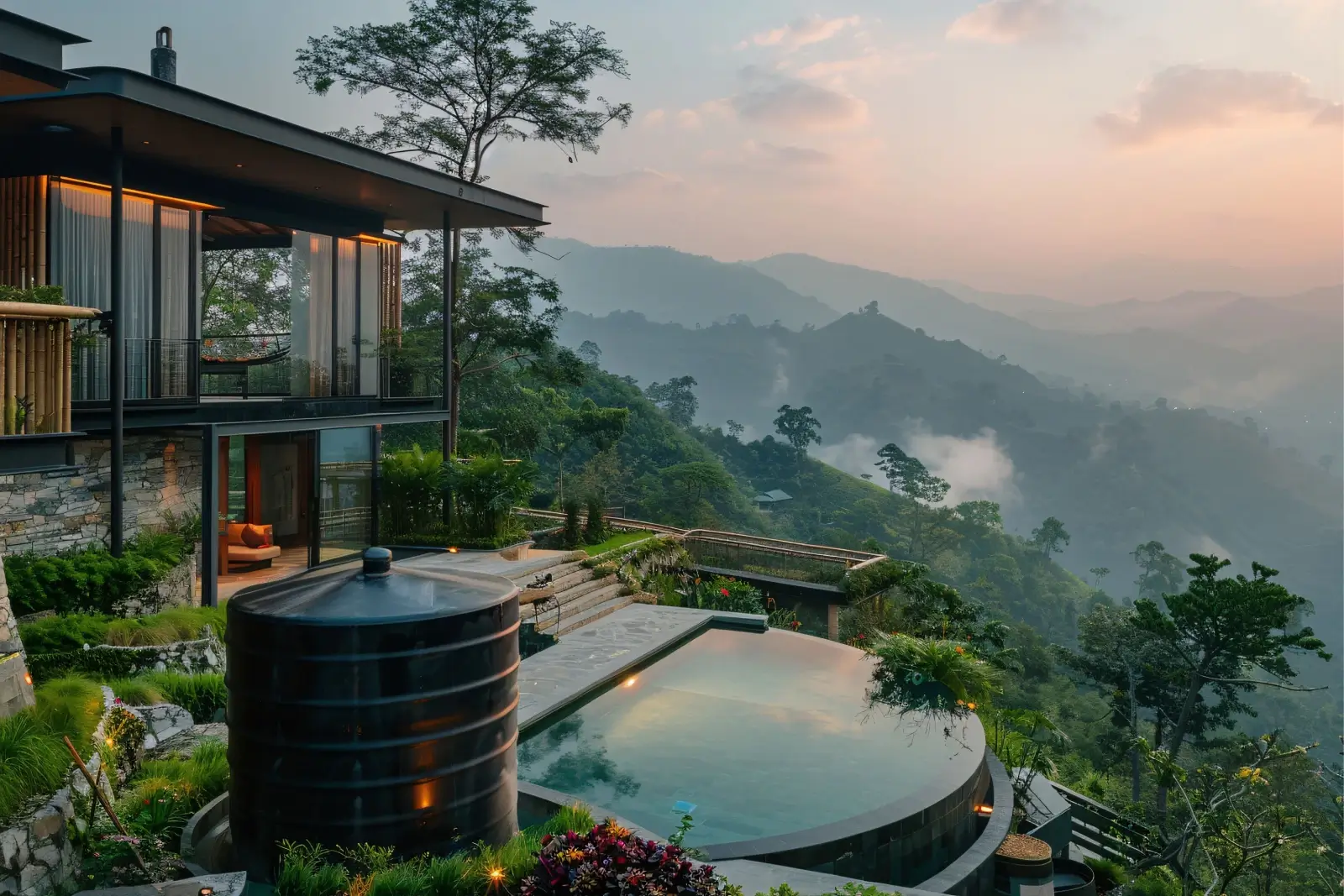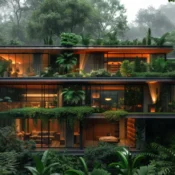The Ultimate Guide to Buying a Second Home in the Mountains

The Ultimate Guide to Buying a Second Home in the Mountains
Buying a second home in the mountains is a dream for many. Whether you’re drawn by the serene landscapes, the fresh mountain air, or the idea of having a retreat to escape the hustle and bustle of daily life, investing in a mountain home can be an exciting venture. However, purchasing property in a mountainous area comes with unique considerations that differ from buying a primary residence or a vacation home elsewhere.
In this guide, we’ll walk you through everything you need to know about buying a second home in the mountains, including choosing the right location, understanding the financial aspects, and the practicalities of maintaining a mountain property.
1. Why Buy a Second Home in the Mountains?
There are several reasons why people invest in a mountain home. The tranquility of nature, outdoor recreation opportunities, and the potential for a steady rental income are just a few factors that make the mountains an attractive option for a second home. Here are some of the top reasons to consider:
Natural Beauty and Peace
Mountain homes often provide breathtaking views and a sense of peace that’s hard to find in urban areas. Whether you want to wake up to the sight of snow-capped peaks or enjoy hiking trails right outside your door, the allure of nature is a powerful motivator.
Outdoor Activities
If you enjoy outdoor activities like skiing, snowboarding, hiking, or fishing, a second home in the mountains can serve as the perfect base. Many mountain regions are home to top-tier ski resorts and year-round activities, making it ideal for active families.
Investment Potential
In certain mountain regions, second homes can generate rental income when you’re not using them. Whether through vacation rentals or long-term leasing, mountain homes in desirable locations can provide a steady revenue stream, especially in tourist-heavy areas.
Escape and Relaxation
For city dwellers, a mountain retreat can be the perfect weekend getaway or summer refuge. The slow pace of mountain living offers a chance to unwind, reconnect with nature, and enjoy a slower pace of life.
2. Choosing the Right Location
The first step in buying a second home in the mountains is selecting the ideal location. Not all mountain regions offer the same benefits, so it’s essential to carefully consider your priorities and preferences. Here are some factors to keep in mind:
Accessibility
How easy is it to reach your mountain home from your primary residence? Proximity to major highways or airports can make a huge difference, especially if you plan to visit frequently. For weekend trips, you’ll want a location that’s within a reasonable driving distance.
Climate
Mountain climates can vary significantly based on altitude, latitude, and other factors. For instance, some areas experience heavy snowfalls during winter, while others have milder weather. If you’re planning to use your second home year-round, choose a location with a climate that suits your needs.
Local Amenities
While the mountains provide peace and quiet, you’ll still want access to essential amenities such as grocery stores, medical facilities, and entertainment options. Research the surrounding community to ensure it offers the services you’ll need.
Outdoor Recreation
If your dream is to spend your time skiing or hiking, make sure the area offers the activities you’re interested in. Look for homes near ski resorts, hiking trails, or national parks that align with your hobbies and lifestyle.
Real Estate Market Trends
Mountain real estate can fluctuate based on factors like tourism, environmental regulations, and development projects. Research the local housing market to understand whether prices are rising, falling, or remaining stable, and consider how these trends might impact the long-term value of your investment.
3. Types of Mountain Properties
Once you’ve chosen a location, the next step is to decide what type of mountain property is right for you. Mountain homes come in various styles, from rustic cabins to modern luxury chalets, each with its own set of advantages and considerations.
Cabins
Mountain cabins offer a rustic and cozy vibe, often made of wood and designed to blend with the natural environment. These homes tend to be smaller and simpler, making them ideal for those who value solitude and connection with nature.
Chalets
If you’re seeking a luxurious mountain escape, chalets are an excellent option. Typically larger and more elaborate, chalets often feature high-end finishes, open floor plans, and expansive windows to capture mountain views.
Log Homes
Log homes are a classic choice for mountain living. They are sturdy, energy-efficient, and offer a distinctive aesthetic that complements the surrounding nature. However, they may require more maintenance due to the materials used.
Townhomes and Condos
For buyers who prefer a low-maintenance option, a townhouse or condo near the mountains can provide the best of both worlds. These properties often come with amenities like snow removal, landscaping, and maintenance services, allowing you to enjoy mountain life without the upkeep of a standalone house.
4. Financing Your Mountain Home
Financing a second home is different from financing your primary residence. Lenders often have stricter criteria for second-home mortgages, and interest rates may be slightly higher. Here are a few key points to keep in mind when seeking financing:
Down Payment
For second homes, lenders typically require a larger down payment—often between 10-20%. If you’re buying in a high-demand mountain area, the down payment could be even higher.
Credit Score
Because a second home is considered a higher risk, lenders often require a strong credit score to approve a mortgage. Make sure your credit is in good shape before applying for a loan.
Interest Rates
Expect interest rates for a second home mortgage to be slightly higher than for a primary residence. Shopping around for the best rate and considering fixed-rate loans can help save money in the long run.
Rental Income Considerations
If you plan to rent out your second home part-time, some lenders may count expected rental income toward your qualification for a loan. However, this depends on the lender’s policies and how much rental income you can realistically expect.
5. Costs to Consider
Owning a second home comes with additional costs beyond the purchase price. It’s important to budget for ongoing expenses such as:
Property Taxes
Mountain homes, particularly those in popular tourist destinations, may have higher property taxes. Research the tax rates in your chosen area to understand the long-term financial commitment.
Insurance
Mountain homes are often located in areas prone to natural disasters like wildfires, floods, and heavy snowstorms. As a result, homeowners’ insurance rates may be higher, and you may need to purchase specialized coverage for risks like flood or wildfire damage.
Maintenance and Repairs
Mountain homes require more maintenance than city homes, particularly if they’re located in remote areas. Snow removal, road access, and general wear and tear from the environment can all lead to higher upkeep costs. It’s wise to set aside a budget for routine maintenance and emergency repairs.
Utilities
Depending on the location, utilities such as heating, water, and electricity might be more expensive in mountain areas. You’ll also need to account for any off-grid living expenses if the property is located far from urban infrastructure.
6. Maintaining Your Mountain Home
Mountain homes come with unique maintenance challenges. From preparing for extreme weather to keeping wildlife at bay, it’s crucial to have a plan in place to ensure your home remains in good condition.
Winterization
In areas with harsh winters, proper winterization is essential. This includes insulating pipes, ensuring proper heating systems, and taking steps to prevent ice dams or snow buildup that could cause roof damage.
Wildlife Management
Mountain homes often attract wildlife, which can sometimes be a nuisance or a danger. Research how to bear-proof your property, protect against small critters, and manage potential encounters with local animals.
Access Roads
During winter months, snow removal on access roads can be a major concern. If your property is remote, you may need to invest in a snowplow service or equipment to ensure you can access the home year-round.
7. Making the Most of Your Investment
If your mountain home is primarily a vacation property, you can maximize your investment by renting it out when you’re not using it. Vacation rental platforms like Airbnb or VRBO make it easy to list your property and generate income.
Rental Income
Research the local short-term rental market to understand the demand for vacation properties in your area. Homes near popular ski resorts or hiking destinations often do well, especially if they offer desirable amenities like hot tubs, fireplaces, or proximity to outdoor attractions.
Property Management
If you plan to rent out your second home, consider hiring a property management company to handle bookings, cleanings, and maintenance. This can help ensure a smooth rental experience without requiring you to manage the property from afar.
8. Long-Term Considerations
When purchasing a second home, think beyond your immediate needs. Consider how the home will fit into your future plans. Will it serve as a retirement home? Could it be passed down to future generations? By thinking long-term, you can make choices that will maximize the value of your investment over time.
Resale Value
If you ever decide to sell your mountain home, certain features—like proximity to popular resorts, modern amenities, and good road access—will help maintain or increase its value. Keep future buyers in mind when making upgrades or renovations.
Estate Planning
If you intend for your mountain home to become a family legacy, make sure it’s incorporated into your estate planning. This can help avoid future disputes and ensure a smooth transition of ownership.




 Villas
Villas Resorts
Resorts Plots
Plots Lands
Lands Cottages
Cottages Flats
Flats Studio Apartments
Studio Apartments Residential Property
Residential Property Commercial Property
Commercial Property New Projects
New Projects Rishikesh
Rishikesh Sales & Marketing
Sales & Marketing Project Planning
Project Planning Land Acquisition
Land Acquisition Investment Banking
Investment Banking Hospitality
Hospitality Leasing
Leasing
















